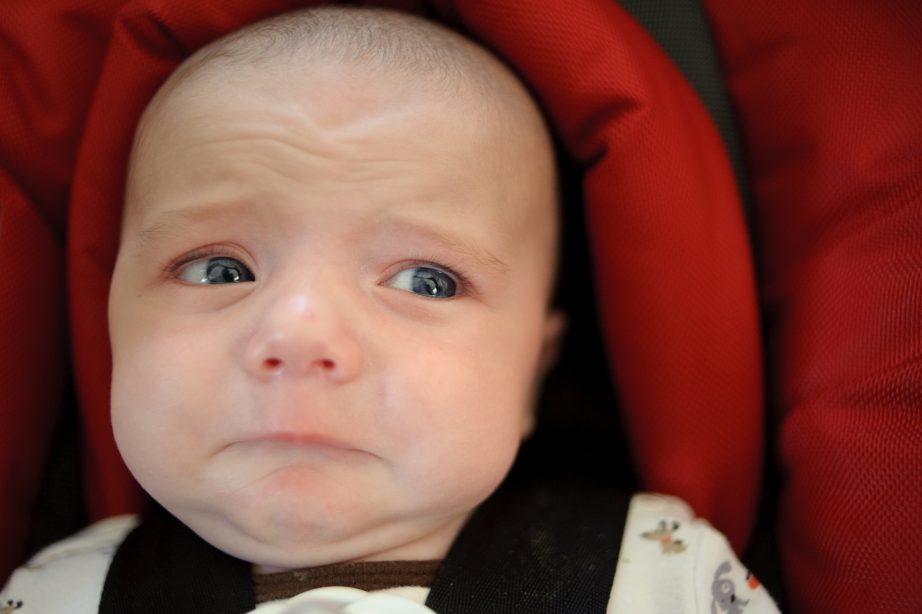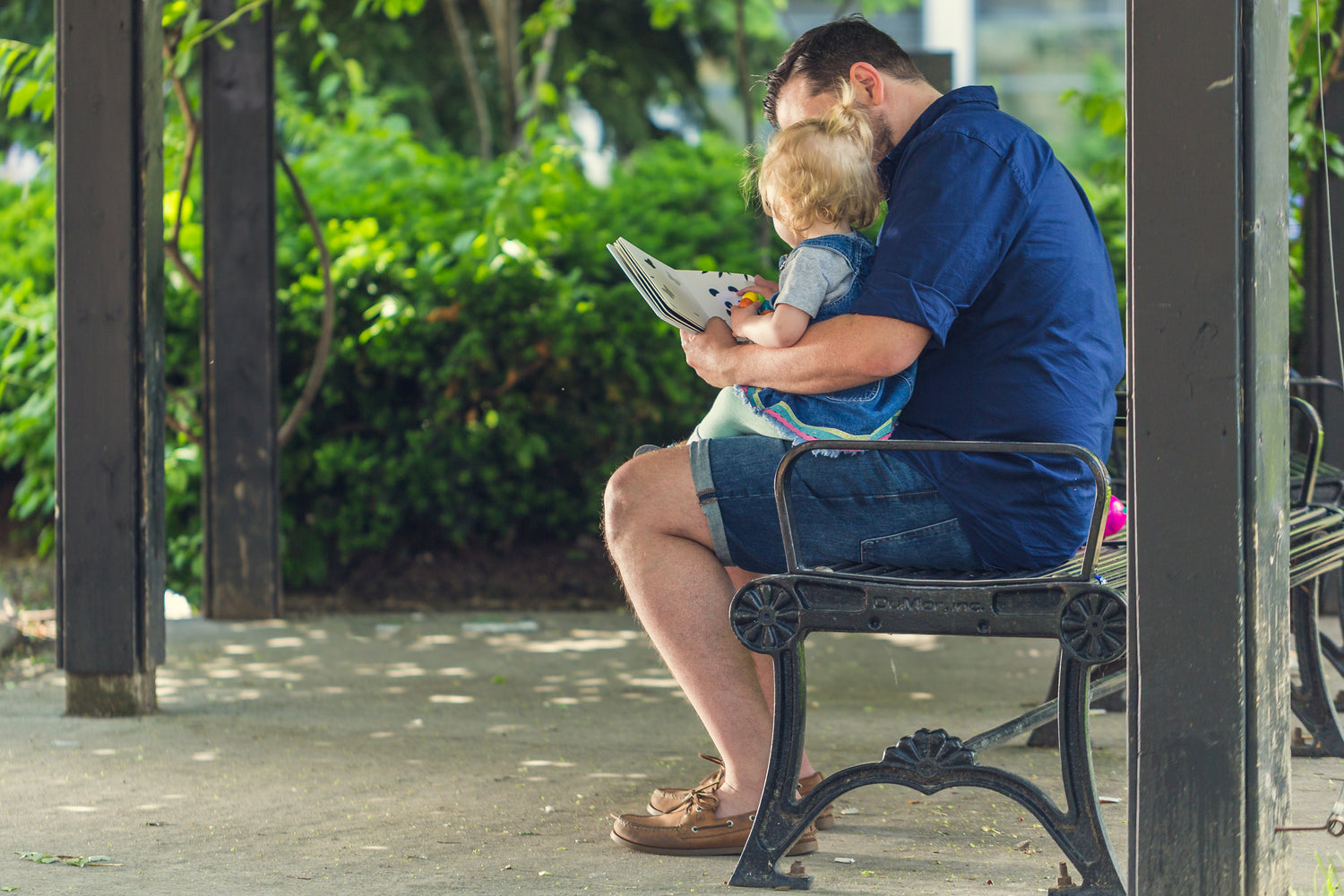Your baby’s cries are designed to make you respond. Like, NOW! Being in charge of up to 3 tons of metal and a bunch of passengers is one of those unique situations in life when responding isn’t really an option in the obvious sense. Even if you coincide car rides with nap time and take the train and walk as much as possible, some trips are simply essential but potentially dangerously distracting. So what can you do to improve the stress levels or help your baby feel relaxed on car journeys so they don't hate their car seat and have to cry-it-out? Here are some ideas to help;
Follow the MyWay Code
It IS distressing to hear a child cry, possibly more so when they are so close and you are engaged in some pretty complex visual, cognitive, manual and auditory multi-tasking - your brain will feel like it's about to blow a fuse. Taking care of our own state of mind becomes critical. Notice the thoughts that arise even before the journey starts, notice them when you put your child in their seat and again at the peak of tension - keep noticing them every time and gradually you may find the intensity of these feelings start to diminish. Remind yourself that your baby is close by, that you’re doing your best, that it’s not perfect, but your heart is open and loving.
Give Your Child an MOT
The position of your little one’s body in the car seat isn’t a position they would normally adopt so any cranial or spinal misalignment or other anomaly (not uncommon after a trip through the birth canal) could be the cause of physical discomfort. Consulting a chiropractic doctor might be a wise place to start.Is travel sickness an issue? Some crying infants grow into car sick children - possibly coincidental, possibly not. Does your child seem different on winding country lanes or on straight motorways?
Baby-friendly author, Sarah Ockwell-Smith recommends using a little mandarin oil on a muslin cloth for travel sick infants and there are various alternative practitioners in addition to your GP who you may wish to approach regarding motion sickness.
Become Car Seat Curious
Make sure your car seat is fitted correctly and your rear facing seat is within the recommended 30-45 degree angle. Although 30 degrees is too upright for a newborn, try experimenting with the angle to establish whether it makes a difference to acid reflux if that’s an issue. Although many parents find their children dislike rearward facing seats and find the crying eases when the child is old enough to face forward it’s important to keep this fresh in your mind:“Rearward-facing seats provide greater protection for the baby's head, neck and spine than forward-facing seats. So, it is best to keep your baby in a rearward-facing seat for as long as possible. Only move them to a forward-facing once they can sit up unaided and they have exceeded the maximum weight for the baby seat, or the top of their head is higher than the top of the seat. Or, you could consider using a larger (group 1 or group 2) rearward-facing seat.” Childcarseats.org.uk
Sometimes a different car seat is all it takes to transform a crying infant into one who can tolerate a road trip. Take a look at your car seat and feel around it - is there much padding under your child’s body? Is the padding on the straps in the correct place? Does it have a little head cushion which isn’t necessary for safety but once removed would provide more visibility to the child? Is there any dampness which makes their back chilled? Some parents report their child being happier with a sheepskin car seat liner.
Front Seat, Back Seat or Human?
Often the inability to make human connection through touch or eye contact is what triggers severe infant distress (we are a constant contact species after all). So although the rear of the car is safer, it is still legal to have a car seat in the front as long as the air bag is disabled.
If you do opt for the front seat, be mindful not to be overly distracted (same goes for the back!) and you’ll have to be on the ball with the air bag status if you carry other passengers up front too. Human contact doesn’t have to be mum or dad either. Some parents move an older sibling to the rear middle seat so the baby can have some touch (hand holding) or you may wish to invite any other willing passenger to offer soothing touch and eye contact from the back seat.
Your Child’s Experience
Take a moment to imagine yourself in your child’s shoes/car seat. What do you notice? Is the sun shining in their eyes, is the sun shade obscuring an otherwise interesting view? Are the shoes uncomfortable - maybe it’s more comfy to have them off? Try experimenting with having the window up, windows down a little - bear in mind that a window open on one side only can create uncomfortable pressure. Experiment too with the car seat shade and the window shades - it might be that your child doesn’t hate the car but they can't stand the sunshade!
Sanity-saving Comforts
Find a song your child loves and play it repeatedly for several days - while you play the song dance about, sing along, interact playfully and build positive associations. Then play this song in the car - it may work a dream, it may not, but it’s worth a go!If your child has a favourite lullaby then play that too or you could make up your own songs for the car and sing them to soothe yourself in a potentially stressful situation.
Some children are soothed by white noise, whale music or a dummy - always worth considering when you’re dealing with distress. You might also want to bring along a blanket or favourite toy - teddy and other toys could be comforting and could be used in role-play situations at home to process the car experience with a toddler who still gets car-tearful.
Toys and Mirrors
Even if you’re a parent who would choose not to allow TV, let alone in the car, this is a compromise which may become compelling when crying becomes unbearable and your own ability to concentrate is undermined.Many parents recommend You Tube nursery rhymes or dvds for car journeys - you could introduce your child to nature scenes, farming videos or videos of cute dogs and cats (so that when they’re older they understand what social media is for!).
Soft toys are preferable to hard ones in the car - young children develop a throwing reflex and hard objects hurt. There are now souped-up versions of clip-on arches with dandy toys which include mirrors, lights and music with a remote control fob for the driver so you can stop the music when your sanity becomes challenged by synthesised jolliness instead. Having a large mirror by the rear headrests, so the driver can see the child’s face, can be hugely reassuring and the child often finds it a helpful distraction. Be warned however that any hard objects must be exceptionally well fixed because in an accident they become dangerous flying missiles.
A Top Tip Few People Do!
When you put your child into their car seat do you ever tell them that is what you are doing? I tried this with my 6 month-old and was humbled (I mean really humbled) by the difference it made…simply explaining what was about to happen, where I would be and that she was safe. If we trust that our children are always listening and understanding on some level then it helps them to know what’s happening and how you feel about it.When we remember that our children live in the environment of our feeling it makes it all the more important to see this as a loving collaboration (even if tears always follow) rather than an angst-ridden endurance.Good luck finding the safest solution for your family - there are so many parents who could empathise if you're having a tough time and the good news is that the tears do inevitably ease with age.



